FOR FOOD PHOTOGRAPHERS, 7 COCKTAIL PHOTOGRAPHY TIPS

One of the most well-liked categories of food photography nowadays is cocktail photography. You can play around with color, food styling, and creative props with fantastic results. But, there are drawbacks to taking pictures of drinks.
I’ve included seven ideas in this article to help you become better at taking pictures of drinks so you can walk into your shoots with confidence. To go along with these suggestions, you can also obtain my free food style advice for food photographers!
To see my top advice for beverage photography, click the play button below if you’d rather watch the video!
1. TO ENSURE YOUR PHOTOS LOOK AMAZING, USE COMPLEMENTARY COLORS
Since drinks are often quite one-dimensional objects to photograph, using color theory to enhance your drink photography may be quite beneficial.
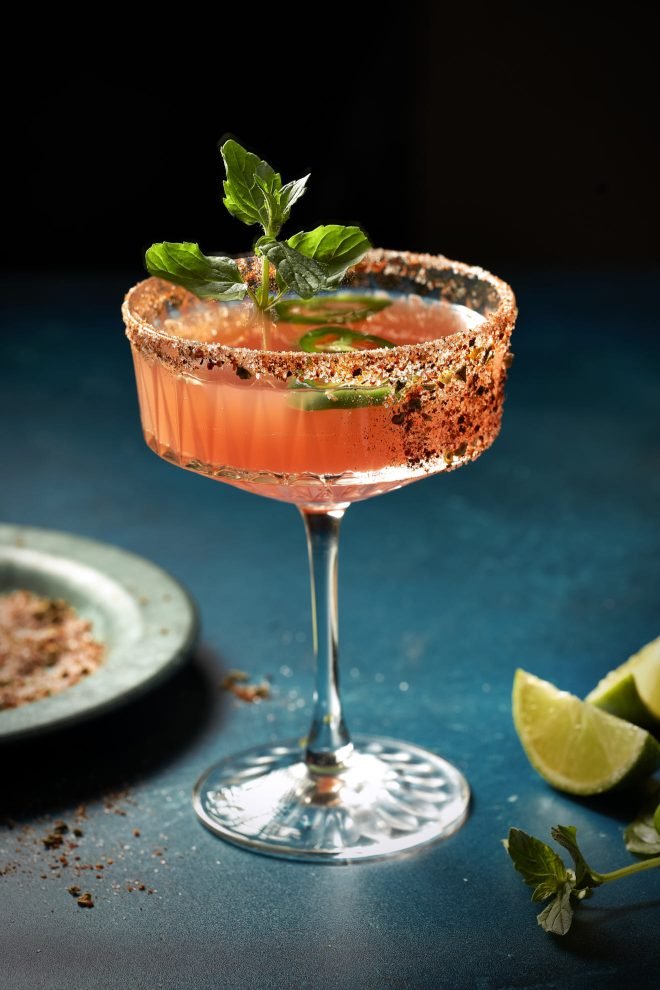
Utilizing complimentary colors—those that are opposite one another on the color wheel—is a fantastic method to provide your cocktail shots more life and intrigue. In order to contrast the orange tone of the drink and make the subject stand out, I used a bright blue background in this picture. This also adds interest to the frame.
2. TO COMPOSE YOUR DRINKS PHOTOS, USE THE RULE OF ODDS
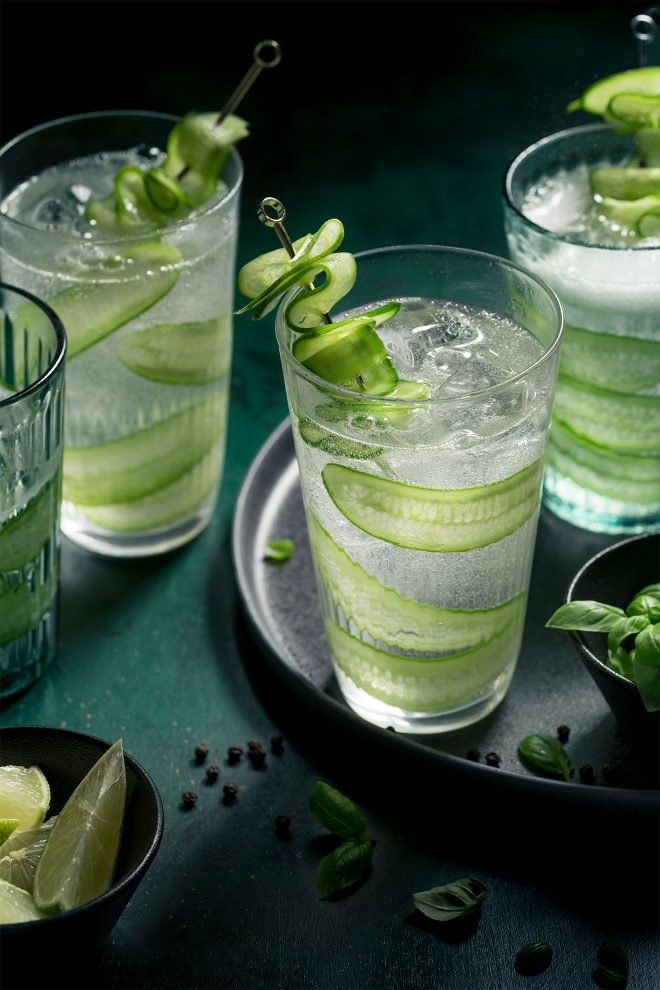
According to the law of odds, an odd number of subjects in your shot will make it more visually appealing and engaging than an even number of topics.
The ideal setting for this kind of work is cocktail photography. Try incorporating three or five primary glasses into your design while using triangles and diagonals.
If the number of subjects in your image is odd, it will be easier to isolate one and make it the focal point of the composition by giving it a strong placement. I have three primary beverages in this picture, so it’s obvious that the one in front is the main focus.
3. IMPROVE YOUR BEVERAGE IMAGES
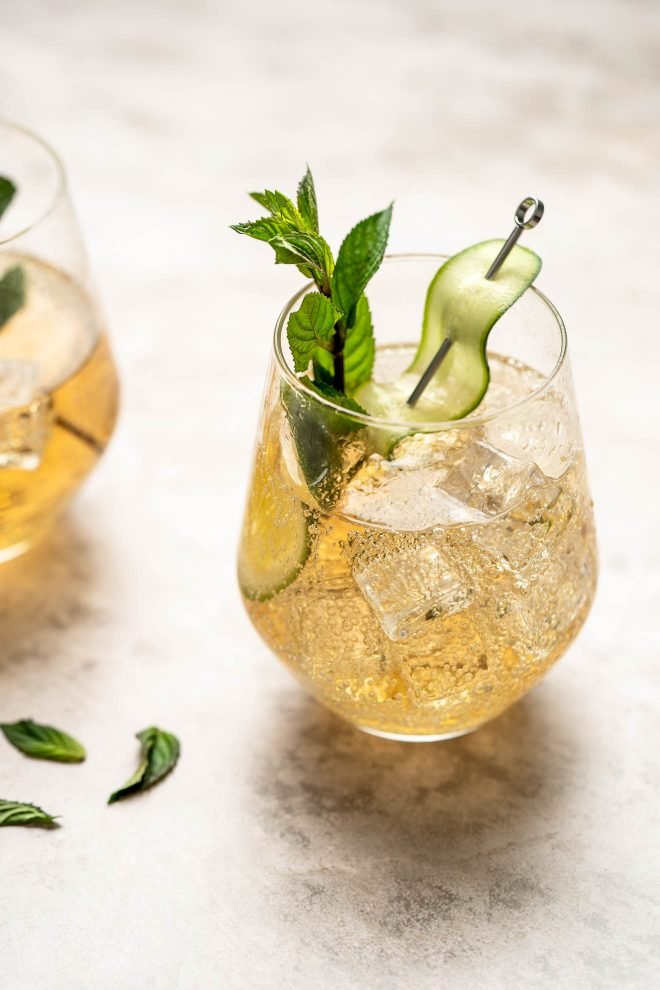
Lighting is one of the most enjoyable aspects of cocktail photography, but it’s also one of the hardest to do right. Everybody wants to steer clear of bright spots and undesired reflections, which occur when light simply bounces off the glass and back into the lens.
Backlighting your drink images is a great approach to combat this. In this instance, the light source is exactly behind and marginally above the beverages, and I’ve softly lit the front of the cups using a reflector.
To prevent reflections, try to angle your light slightly toward the rear, even while side lighting beverages.
4. FOR YOUR COCKTAIL PHOTOGRAPHY, USE HARD LIGHT
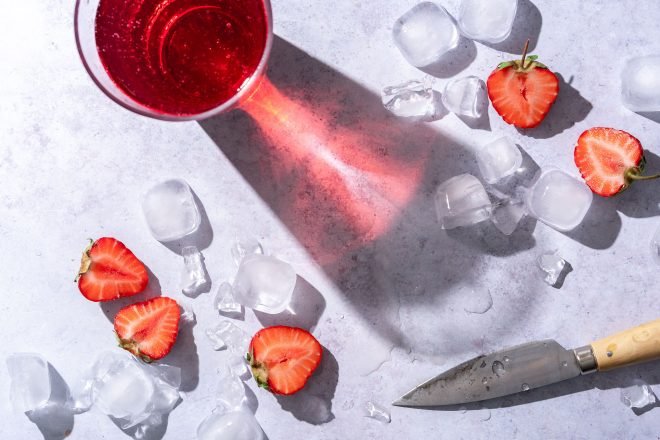
The saying “soft light is better” is often bandied around while discussing food photography. It tells us to diffuse the light and cast soft shadows to produce scenes with lovely lighting and smooth curves.
However, photography isn’t the place for rigid guidelines, rules, and approaches. Hard light may also sometimes be AMAZING! I’ve discovered that shooting pictures of cocktails is the ideal way to catch the textures on the glasses and nearly create a prism effect utilizing natural light.
I directed my light diagonally and positioned it fairly high above my subjects for this picture. You may experiment with shifting your light to get the desired effect. The longer your shadows are, the further away your light is from your glasses.
5. TO CREATE A FROSTED GLASS EFFECT, MIX WATER AND GLYCERIN.
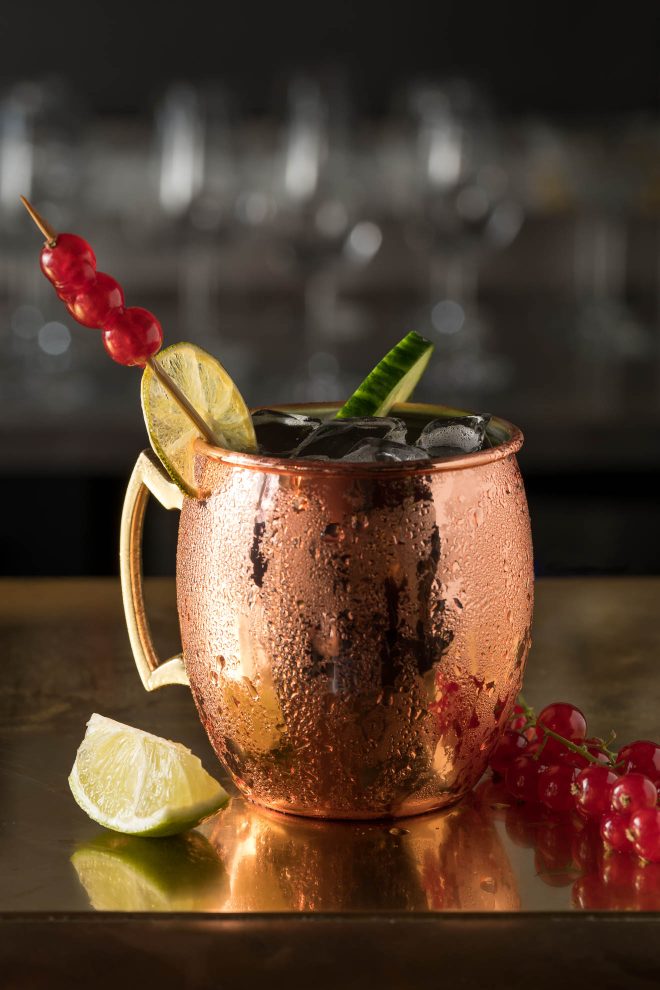
Do you need your drink picture to have that frosted, ice-cold, sharp, “right out of the fridge” appearance? I understand you!
But let’s face it, it’s almost hard to maintain the perfect condensation on the edge of a glass while using artificial lighting, so a food photography set is not the best location to keep things cool and crisp!
Fortunately, there’s an easy solution for this, which consists of combining glycerin and water. Hurray! All you have to do is combine thoroughly 50% glycerin and 50% water in a mister spray bottle, then fill it and spritz your room-temperature glass. No matter how long you leave your glass out, you’ll be left with a flawless condensation effect that never fades or disappears.
6. USE FROG GUM (FOR STAGING) CUBES
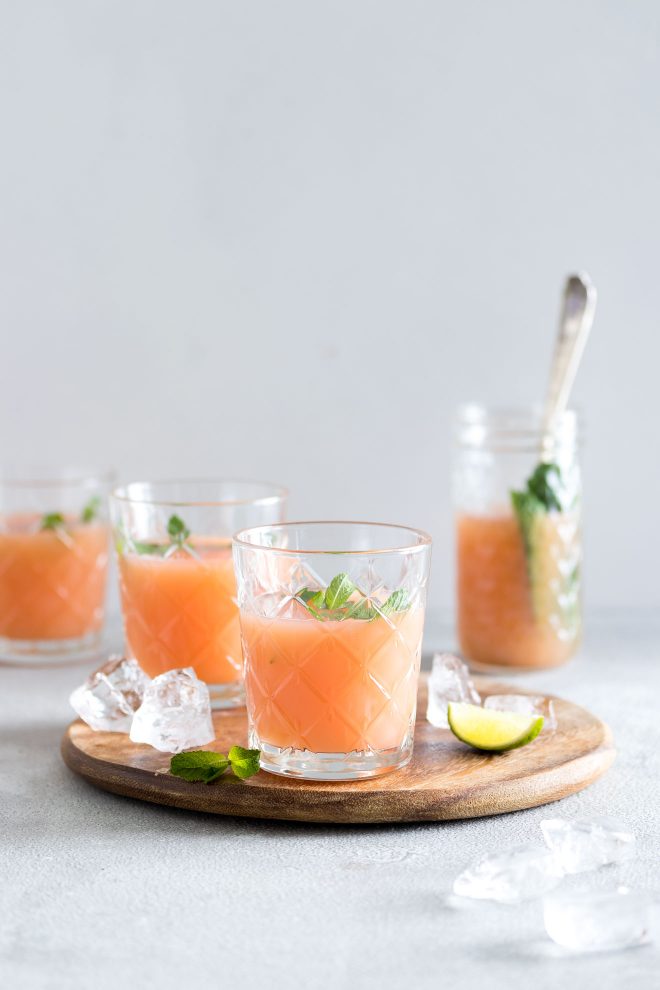
Ice is an extremely perishable item yet a necessary component for many cocktail photos. You may only have a few minutes in a hot styling room with an ice cube before it melts away and you miss the chance to get the ideal, ice-filled photo.
A package of fake ice cubes makes a very useful prop. They are an excellent tool for pre-lighting your drink photography sessions and have a really realistic appearance! This lets you set up everything on set so that when you’re ready to take a picture, you can add the actual ice.
These acrylic ice cubes are a cost-effective choice.
Trengove Ice is the greatest option if you want a more sophisticated, polished appearance.
7. USE CREATIVITY IN YOUR DECORATIONS
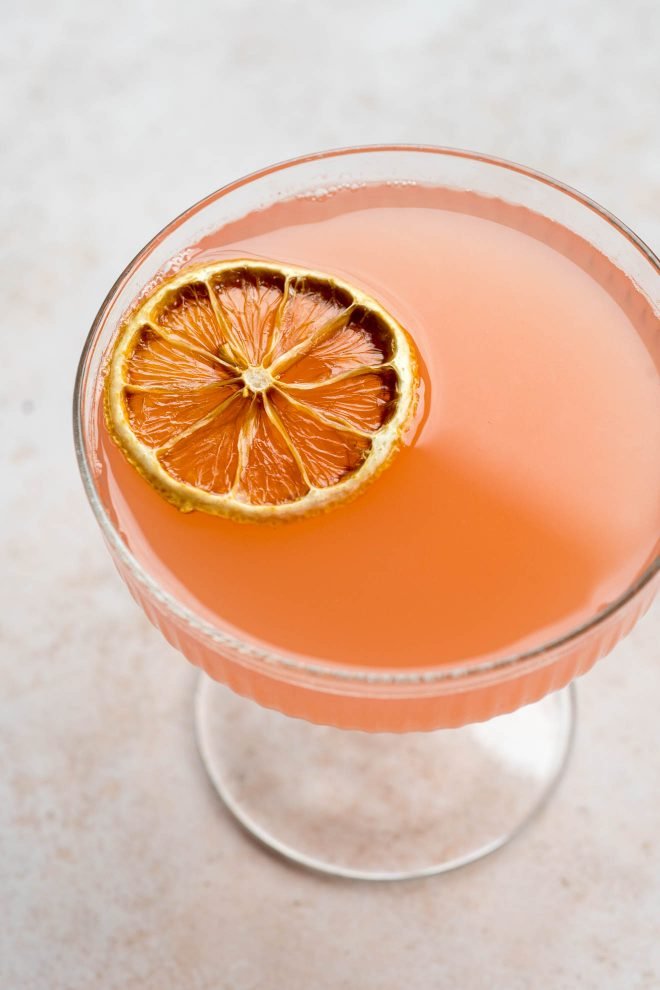
A creative technique to breathe new life and color into your drink pictures is using garnishes. As previously said, one effective technique to give your beverages a splash of color and intrigue is to use complimentary colors for your garnishes. I used an oven to dry some lemon slices to give this grapefruit drink a unique texture.
Aside from color, however, little details like giving your glasses a sugar or salt rim can give your composition still another level of intrigue and nuance. Thoughtful, intriguing compositions lead to attractive beverage photographs.
Many food photographers specialize in drink photography, so don’t be too harsh on yourself if it takes some time to find a look you enjoy. Simply never stop practicing!




